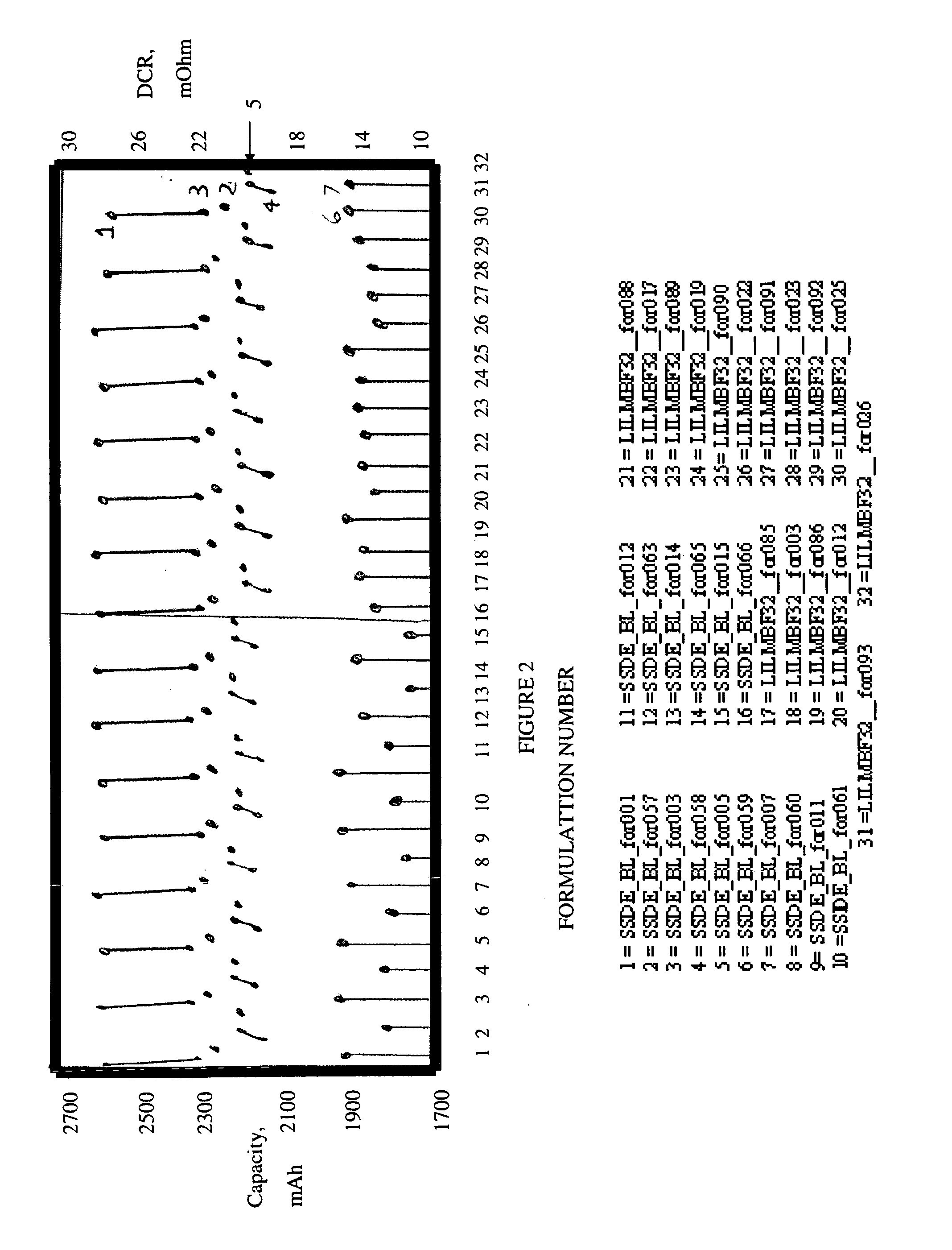Non-aqueous electrolytes for lithium electrochemical cells
- Summary
- Abstract
- Description
- Claims
- Application Information
AI Technical Summary
Benefits of technology
Problems solved by technology
Method used
Image
Examples
example 1
[0032]Storage stability of LiPF6 mixture with lithium bis(trifluoroborane)imidazolide (LiIm(BF3)2). An electrolyte solution was prepared by dissolving LiIm(BF3)2 (0.262 g, 1.25 mmol) and lithium hexafluorophosphate (3.61 g, 23.75 mmol) in 1 / 1 / 1 EC / DMC / DEC (wt %) to yield a 25 mL solution that was 1 M in Li+. A five mL aliquot was sealed in glass ampoules under an argon atmosphere. For comparison, a 1 M lithium hexafluorophosphate solution in 1 / 1 / 1 EC / DMC / DEC was similarly prepared and sealed in a glass ampoule. Both were then stored at 80° C. After one day the LiPF6 solution darkened considerably and after 4 days the ampoule burst from excessive gas pressure generated by decomposing electrolyte. The solution with the lithium bis(trifluoroborane)imidazolide salt additive had no visible change after one day and only very slight darkening after one week.
example 2
[0033]Cell testing. Two lots of 8 cells each were assembled and activated either with baseline LiPF6 electrolyte or with the same electrolyte containing 5% by weight of the LiIm(BF3)2 salt additive. The active anode material used was a carbon based material and the active cathode material was LiFePO4, which were each coated onto copper and aluminum foil, respectively. The cells went through the normal formation and stabilization procedure. Two groups of test data, pre- and post-stabilization are shown for each cell in FIG. 2. No additional / excessive irreversible capacity loss (pts. 1, 3, 4 and 5) was caused by the salt. The 5 A (2.3 C) discharge capacity (pt. 2) was affected very little as was capacity loss after stabilization (pt. 4).
PUM
 Login to View More
Login to View More Abstract
Description
Claims
Application Information
 Login to View More
Login to View More - R&D
- Intellectual Property
- Life Sciences
- Materials
- Tech Scout
- Unparalleled Data Quality
- Higher Quality Content
- 60% Fewer Hallucinations
Browse by: Latest US Patents, China's latest patents, Technical Efficacy Thesaurus, Application Domain, Technology Topic, Popular Technical Reports.
© 2025 PatSnap. All rights reserved.Legal|Privacy policy|Modern Slavery Act Transparency Statement|Sitemap|About US| Contact US: help@patsnap.com



